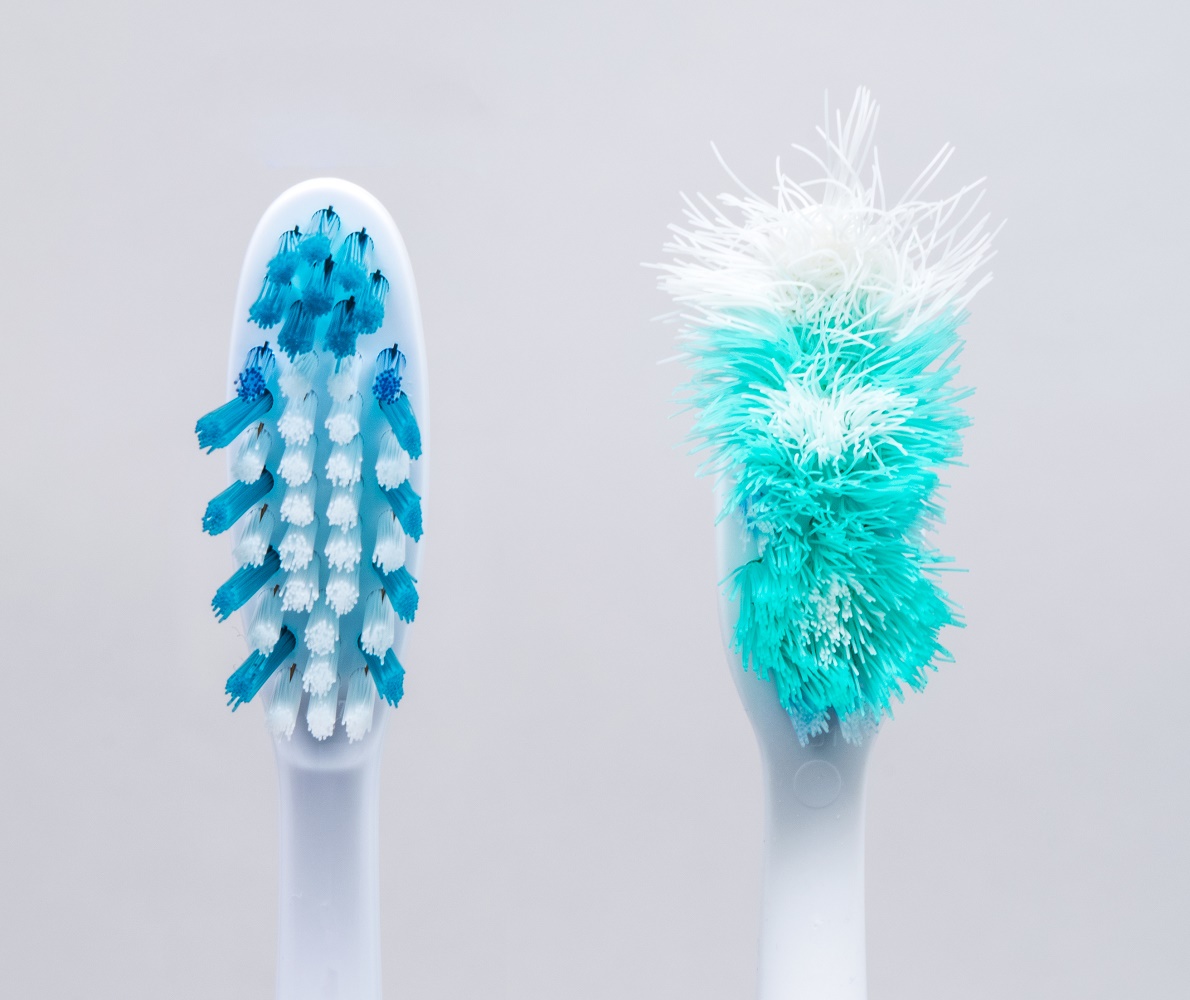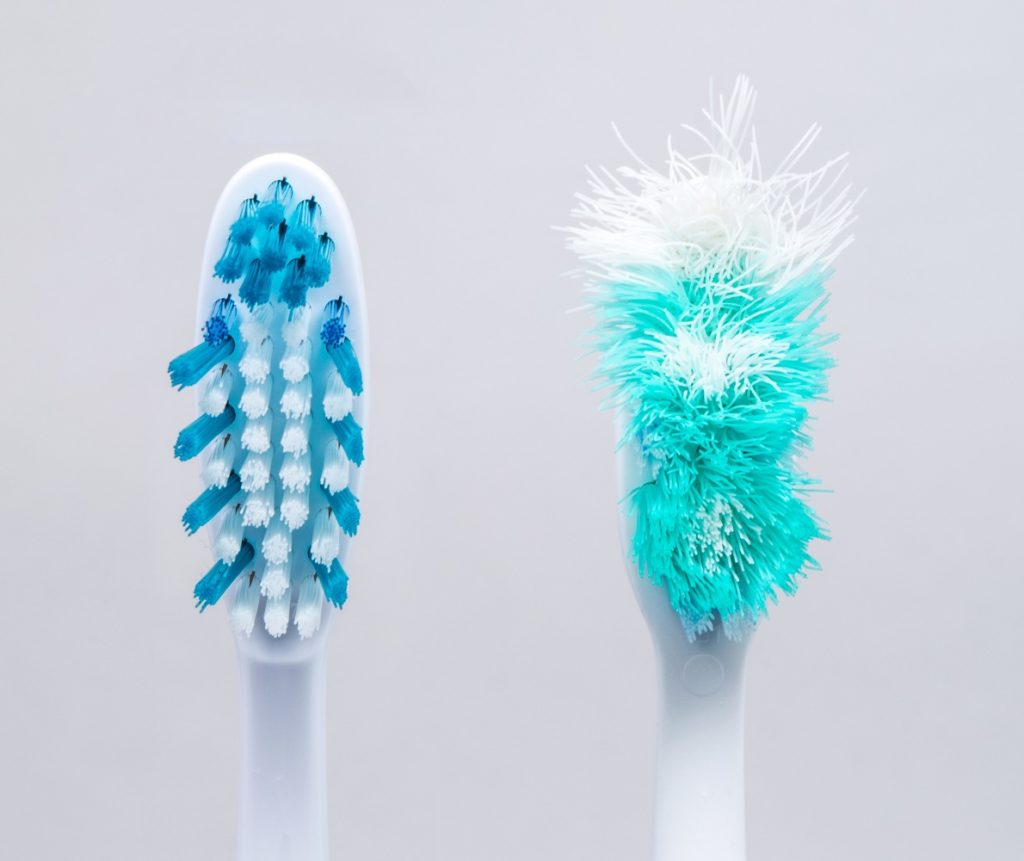
30 Apr When Is It Time to Replace Your Toothbrush?
 There are some celebrities that make the rumpled bed head hairstyle look good. Rod Stewart. Mick Jagger. We know them for their voices and iconic songs as much as we do for their signature looks. But when your toothbrush develops a bad case of bed head, its time to replace it.
There are some celebrities that make the rumpled bed head hairstyle look good. Rod Stewart. Mick Jagger. We know them for their voices and iconic songs as much as we do for their signature looks. But when your toothbrush develops a bad case of bed head, its time to replace it.
A worn-out toothbrush loses its ability to remove plaque from the enamel surface of your teeth. Bristles bent and twisted cannot reach the small gaps in teeth where food particles can hide, promoting the chances of decay and cavities. A worn-out toothbrush causes irritation to gums, causing inflammation which can lead to gum disease. An old toothbrush is simply full of bacteria and needs to go. So, how do you know when it’s time to get a new toothbrush?
Like Clockwork
A toothbrush should be replaced every 3 – 4 months or when the bristles become frayed, whichever happens first. Worn out bristles lose effectiveness making it easier for the 700 distinct species of bacteria to hide and thrive in your mouth. In the event of illness such as cold or flu, a toothbrush should be replaced immediately following the illness, even if the brush was new prior to becoming ill. Germs and viruses can live on the toothbrush head for weeks and holding onto it after illness increases the reintroduction of that bacteria into your mouth.
Caring for a Toothbrush
Prolong the life of your toothbrush with proper storage and care. The American Dental Association (ADA) recommends rinsing the brush immediately after using it to remove additional paste and debris. Store upright so the head can air out. And while toothbrush covers are popular, putting the cover over the head of the brush while it is still wet can promote microbial growth. Ensure the toothbrush head is dry before covering. If additional sanitizing is a concern, soaking your toothbrush in original Listerine® before drying can help. The same care given to a manual toothbrush should also be given to an electric one. Replace the head attachment every 3 months and wipe down the device regularly to keep it clean.
Finally, never share your toothbrush. Allowing another person to use your toothbrush, or using theirs, can enable bodily fluids to transfer. Keep spare toothbrushes in your home for your spouse or guests who may forget their own. Your brush is your own, and yours alone.
A Strong Trio of Care
Caring for your teeth is a straightforward process that requires a little self-discipline. Keep your teeth, gums, and mouth healthy long-term with these 3 steps:
-
- Daily Hygiene: Brush twice per day two minutes each time. Floss and brush afterward.
- Let your toothbrush air dry before covering and replace it every 3-4 months or sooner when ill.
- Visit your dentist twice annually for a cleaning and checkup.
Swapping out your old toothbrush for a new one should be part of your regular shopping routine. Purchase them in bulk to make the transition from old to new an easy one. Schedule a recurring note in your calendar as a reminder to swap and replace.
There are many products in our home that we regularly replace: sponges, batteries, expired foods, and other goods. Add your toothbrush to the list to ensure the health of your mouth. When sensitivity, inflammation, or bleeding occur, contact us immediately at (281) 265-3567 or schedule an appointment online.
Dr. Dragana Angelova
Imperial Dental Center
“We love to see you smile”


